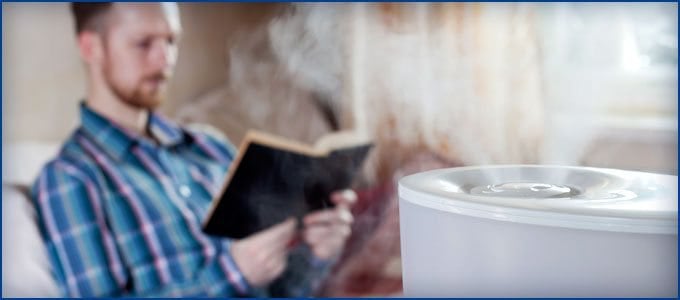

Humidity has a bad rap.
Most homeowners think indoor humidity - the amount of moisture in your home’s air - isn’t a good thing.
Too much humidity is tied to stories of destruction - mold, paint blisters, musty smells, and wallpaper peeling. Too little humidity is tied to stories of poor health - dry skin, irritated sinuses and throat, and itchy eyes.
And it’s true, humidity can be bad, but only at either extreme.
So if moderate humidity is fine, you're probably wondering "what should the humidity be in my house?"
RetroFoam of Michigan has been helping homeowners create the comfortable home of their dreams, and that includes controlling the humidity in their homes.
We want you, the homeowner, to have all of the information you need. Below you will find what should the humidity be in your house.
What is the Ideal Indoor Humidity?
Relative indoor humidity should be between 30 and 50 percent, according to Bob Vila.
Anything higher than 50 percent can leave your home uncomfortable and increases the moisture in the air. This excess moisture can lead to condensation in your home and the growth of mold and mildew.
As temperatures drop, though, the ideal indoor humidity in Michigan homes should too, experts say. Generally, 30 to 40 percent is standard for colder climates during the winter months. Keeping the relative humidity below 50 percent helps to prevent the growth of mold and mildew, as well as dust mite infestations.
The first step to ideal indoor humidity is picking up a solid hygrometer, which is available at your local hardware store and home improvement store. This device will help you determine and then monitor your home’s humidity level.
Once you are aware of your levels, you can take a few steps to decrease or increase your humidity level.
Decreasing Humidity Levels in Your Home
If you realize your home is a giant sauna causing you to lose weight by the second, consider turning down or turning off a humidifier to reach ideal indoor humidity.
You may even turn on a dehumidifier, especially in basements during the summer.
“Use exhaust fans while cooking and bathing or open a window to exchange fresh, drier air,” according to Apartment Therapy. “Reduce the amount of water introduced into the home by cooking with covered pots; taking cooler, shorter showers; venting clothes dryers directly to the outside; and reduce the number of plants in the home.”
Also consider updating the insulation in your home to prevent unwanted moisture from easily entering it and moving around, increasing the humidity in the process.
Increasing Humidity Levels in Your House
If your nose is running constantly and you can’t stop itching your eyes, consider adding humidity to your home.
You can adjust the humidifier on your furnace during the heating season until you reach your desired relative humidity, according to Lesperance.
Use a portable humidifier only when the heater is on and only in rooms with open doors so excess moisture buildup doesn't occur.
Some simple, low-tech options for increasing humidity include adding a bowl of water on a heating system and leaving wet towels or clothes out to dry.
Overall, examine humidity with a fresh set of eyes.
You don’t want structural issues in your home, or health problems. But you do want a comfortable temperature in your house.
Related Articles
8 Things to Do When Identifying Condensation or Mold in Your Home
What Causes Condensation on Interior Walls?


